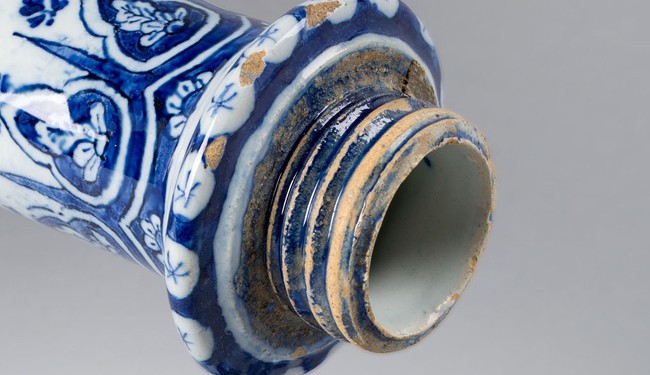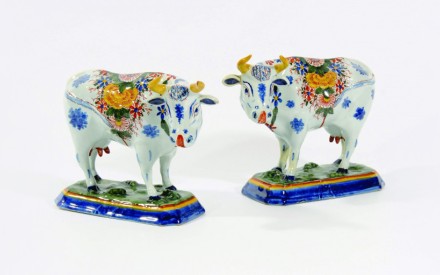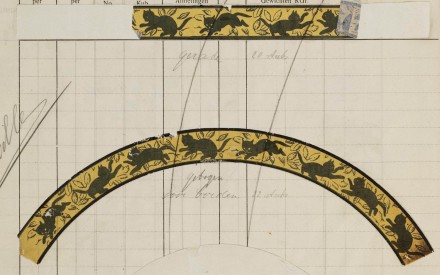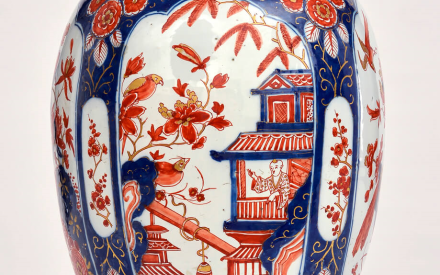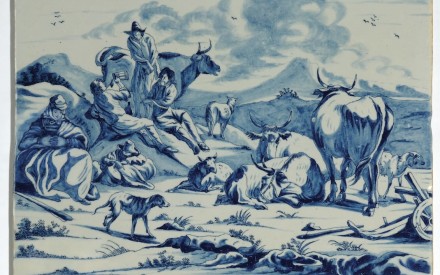Antique Delftware was made between the late seventeenth and early nineteenth centuries. Handpainted decoration from this period can indicate that an object is Delftware. In this video Delftware specialist Robert Aronson explains what the decoration on Delftware can tell us.
Is Delftware always blue and white?
First of all, it is good to be aware that Delftware comes in all kinds of shapes and colours.
The commonly used term ‘Delft blue’ suggests that Delftware is always decorated in blue. Delftware was originally made to resemble blue-and-white Chinese porcelain, which is why a lot of Delftware is in these colours.
But the pottery makers of Delft were not only inspired by porcelain, and after a time they also began working in other colours, including red, yellow and green.
Simple Delftware was also made in plain white, and some rare pieces have a black background, designed to resemble Asian lacquerware.
Is Delftware always handpainted?
Another important feature of authentic Delftware is that it is always handpainted. Decorations painted by hand can be identified by their flowing lines, for example.
After 1750 various printing techniques were invented for applying decoration, including transfer printing and screenprinting. It is sometimes difficult to distinguish these techniques from handpainting, but occasionally faults can be spotted in the application of the decoration, such as a fold in the motif or a mismatch in the pattern.
Is it possible to see from the object itself when it was made?
It can be useful to date Delftware on the basis of its decoration, but this is also a very complex matter. Many objects were for example decorated with Asian features inspired by Chinese porcelain, but these images are seen from both the early 18th century to the late 19th century.
Decorations can sometimes help with dating, though. This is for example the case with objects that have rococo features. The rococo style was at the height of its popularity between 1730 and 1760.
However: to establish whether something is really Delftware, you also need to look at the mark and the material.

